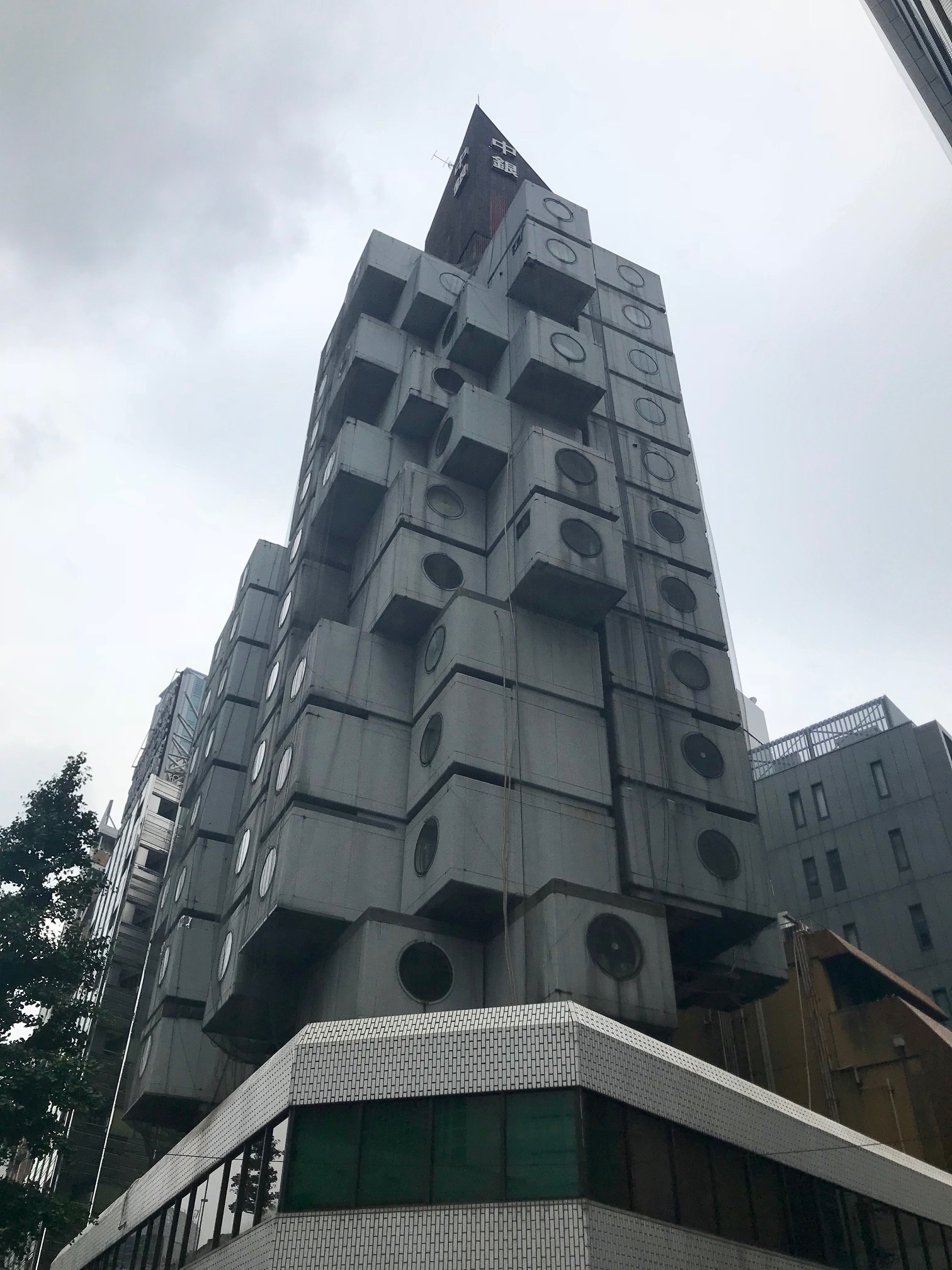It was walking from Hamarikyu Gardens to Tokyo Station in 2018 that I first noticed the tower. It was a detour that I wasn’t expecting, but despite the humidity and threat of rain I couldn’t not go over to see what it was, as it looked like something straight out of Blade Runner. I had a look and took some photos and later in the day, when I was in an izakaya having some dinner, I googled ‘stack of washing machines building tokyo’. My incredibly specific search paid off, and I realised that the building I had visited was Nakagin Capsule Tower.
Built in 1972, the tower only took 30 days to complete as all the capsules had been prefabricated, decorated and furnished at a factory off site. The tower was intended to revolutionise the housing market, as a single capsule could be removed and replaced should it be damaged or fall into disrepair.
The capsules measure 2.5 m by 4.0 m with a single round window (1.3 m diameter) on the far wall. It was marketed to single salarymen, or those working in Tokyo but living further away, who needed somewhere to sleep but not much space. The capsules were also far cheaper than conventional apartments, closer to the price of a luxury car than a home.
The idea never really took off though as the capsules would be extremely expensive to remove, and Nakagin once the pinnacle of Japanese design fell into disrepair. It is still standing today though, one of the last examples of ‘Metabolism’ the architectural movement that was popular in post-war Japan. Metabolism fuses megastructures with the idea of growth and aimed to create buildings that were flexible and could be added to or changed as society grew.
An earthquake, a common occurrence in Japan, damaged some of the capsules and led to a net being placed around the entire building, to prevent any debris falling on the pavement below. Combined with the abundance of asbestos in the building, this lack of earthquake resistance led to discussion over demolition or total renovation of the building. Kurokawa Kisho, the architect who designed the building was drawing up plans to renovate the building, and replace many capsules, but the cost was estimated to be extremely high (6.2 million yen per capsule, approximately £40,000). The tower is also located in a prime real estate area, close to Ginza – one of the most expensive and elegant districts of Tokyo. Following the death of Kurokawa-san in 2007, they have yet to find anyone else to undertake the repair and renovation of the Nakagin Capsule Tower and it is rumoured to be scheduled for demolition in 2022.
Whether it will be torn down or not I can’t say, but I know that I’m glad I stumbled across this retro-futuristic building.





